Table of Contents Show
Campgrounds are filling up, and reservations can be hard to snag, especially on weekends. As a result, you may consider boondocking or dry camping.
These are both great ways to camp, but they can be challenging. We’ve taken advantage of both types of camping and learned a thing or two that might help you in your adventures.
Today, we’re sharing our best boondocking and dry camping tips to help you have a great experience. Let’s dive in and get started!
Is Dry Camping the Same As Boondocking?
The major distinction between boondocking and dry camping is where you’re camping. While many RVers use these terms interchangeably, they’re two different types of camping.
Boondocking is when you are parking for free or only need to purchase a permit and are camping on public lands. Boondocking locations can have established sites, but they’re not in designated campgrounds. You’ll need to be fully self-reliant for power, water, and waste disposal.
Dry camping, much like boondocking, provides no power, water, or sewer hookups. However, you’re in a campground with some facilities and amenities instead of being on public lands. Campgrounds that offer dry camping will typically provide bathroom and shower facilities and possibly a dump station to empty your tanks.
Both types require a tremendous amount of self-reliance. However, boondocking is often more remote and can provide more privacy and space.

How Long Can You Boondock or Dry Camp?
The amount of time you can boondock or dry camp will typically depend on your ability to conserve water, manage your waste tanks, and keep your batteries charged.
Some RVers can go several days on their adventures, but others use the camping styles to travel full-time. The more you can boondock or dry camp, the more you can improve your skills and find ways to extend the length of your trips.
However, just because you can camp for weeks or months at a time doesn’t mean you can stay in the same spot. Many locations have stay limits, requiring campers to move often or have a maximum number of days per month.
Stay restrictions vary from one location to the next, so you must know the restrictions for where you’re camping.

Can You Boondock or Dry Camp Anywhere?
While you can find plenty of boondocking and dry camping options out west, it’s no longer the wild west. You can’t simply park your RV anywhere you want and boondock or dry camp.
Parking on private property without permission is a big no-no, and you can quickly get in trouble. So make sure you get permission before parking on any private property.
Even when using public lands, there are typically some restrictions. Creating new campsites is generally frowned upon and can get you in trouble.
If you’re planning to boondock on public lands, it’s best to research several possible options and boondocking tips because someone may have already beat you to the site. While researching, make sure to check any restrictions regarding boondocking.
When it comes to dry camping, you’re likely to receive an assigned site when checking into the campground. However, some campgrounds will use a spare field or unused lot for dry campers. They may instruct you to simply find a spot in the lot to park your rig and consider others when parking.
Boondocking and Dry Camping Tips
As we said, the more you can boondock and dry camp, the easier it can be. Experience will be your best friend to have smooth camping trips.
Here are some of our best boondocking and dry camping tips!
Start with Short Trips
Don’t bite off more than you can chew, especially when you’re new. Start with overnight or weekend trips. Take detailed notes about what went well and where you need to improve.
Come up with possible solutions for helping to maximize your experience and begin researching any gizmos and gadgets that could help improve your trips.
As you develop your skills and purchase any equipment, you can extend the length of your trips. It might surprise you how long you can make a full fresh water tank last in your RV once you learn how to conserve water!
Keep in Mind: If you think you can’t boondock with a big RV, you’re wrong! Check out these tips for boondocking with a big RV!
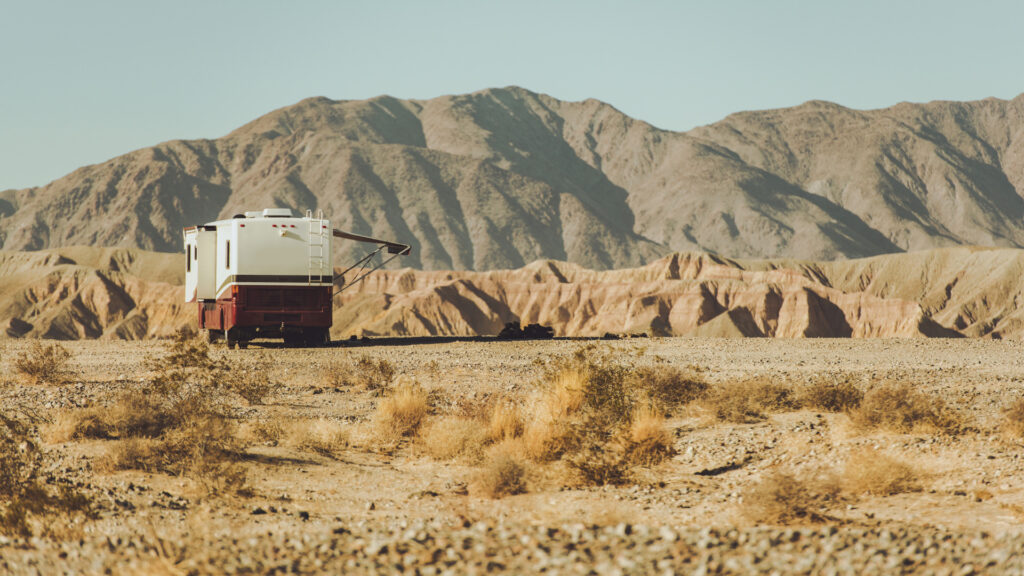
Arrive with Empty Gray and Black Tanks
One of the biggest boondocking tips is making your wastewater tanks last for your trip. We strongly suggest that you empty your tanks before starting your journey.
Find a dump station along the route on the way to your campsite. If you’re dry camping, check if the campground has a dump station, and empty your tanks before parking your rig.
It can be incredibly inconvenient to pack up your campsite to empty your waste tanks. You risk losing your spot if you’re boondocking. So do yourself a favor and arrive with empty tanks to avoid the hassle.
Pro Tip: If you’ve never used a dump station before, don’t stress. Read our guide on How to Use an RV Dump Station!
Fill Up With Freshwater Close to Your Destination
Some RVs have massive freshwater tanks that can hold upwards of 100 gallons of water. However, you have to consider the weight you’ll be adding if you’re traveling with a full water tank.
Water weighs about 8 lbs per gallon, which could mean adding hundreds of extra pounds to your RV. This will make your trailer considerably heavier, using more gas and making it more difficult to tow.
Some manufacturers give boondocking tips and discourage RVers from towing with full fresh water tanks. There have been reports in the RV community of RVers having their freshwater tanks falling out from under their rig while towing.
However, some manufacturers put extra supports to help avoid any issues as your RV bounces down the highway. If in doubt, check with your manufacturer to see what they recommend for your specific rig.
Keep in Mind: If you haven’t used your fresh water tank much, be sure to read How Long Can You Keep Fresh Water in Your RV Tank?
Park Depending on the Region
When parking your rig, it’s important to consider the environment. If you’re using solar panels that can tilt, you’ll want to park with them facing south to get maximum exposure to the sun.
You also want to consider the layout of your RV and parking in the shade. You may love the views out of those large windows, but the heat from the sun will quickly warm up your rig.
If you can park your rig to shade these windows from the sun, you can keep your RV cooler. The shade will be your best friend!
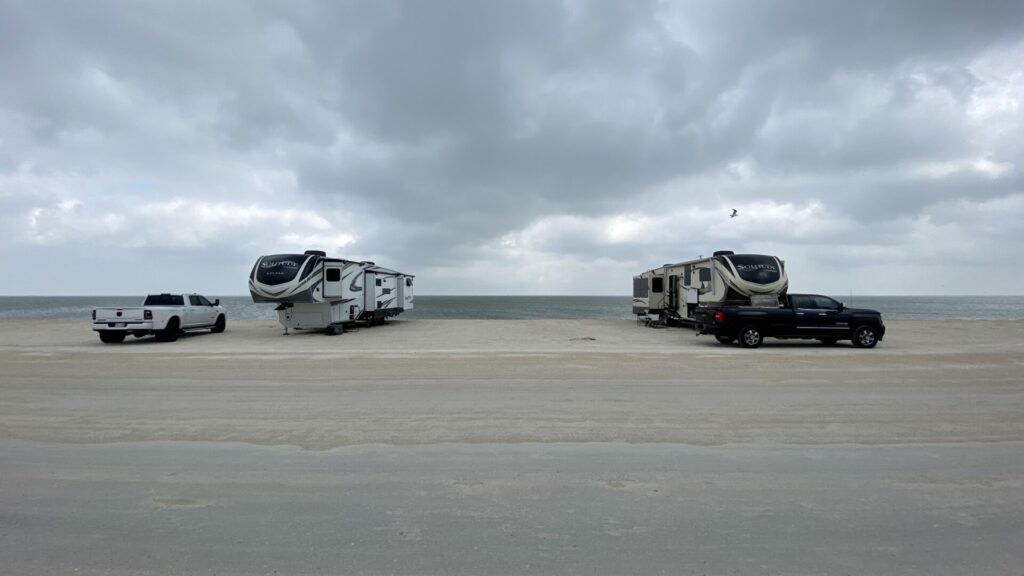
Take Trash in Small Batches
Finding a place to dispose of your trash can be challenging, especially when boondocking. You’re likely to have access to the campground’s dumpster and trash service when you’re dry camping.
However, boondocking means being responsible for finding a place to dispose of your trash.
It’s easier to use grocery bags instead of large trash bags. You can take smaller trash bags with you anytime you need to run into town or fill up on gas.
These are easier to place in trash cans at grocery stores, gas stations, or elsewhere. It may not be as convenient, but it’s a small price to pay for boondocking and dry camping benefits.
Read Reviews
Reading reviews and tips for each boondocking and dry camping location can be incredibly helpful. Because each site is unique, you often won’t know what to expect or what’s available.
Some reviews will provide important information about dumping your tanks or filling up on freshwater. You may even find helpful information on how to access the campsites or what roads to avoid. We regularly use Campendium and iOverlander to find sites and read reviews from other users.
It’s important to keep in mind, much like hotels and restaurant reviews, that just because one person had a bad experience doesn’t mean that you will.
On the other hand, just because they had a good experience doesn’t mean you will. When boondocking and dry camping, many things are outside of your control and require flexibility, especially if the weather doesn’t cooperate.
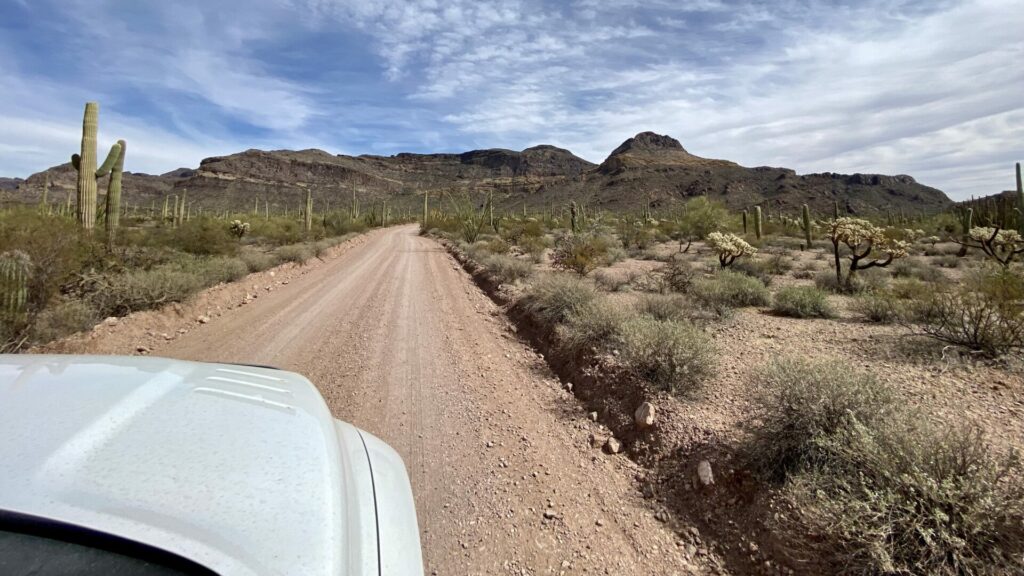
Don’t Hesitate to Leave A Spot If Your Gut Says So
No matter where you’re camping, you should never stay somewhere where you don’t feel safe. If you feel that something doesn’t seem right, you should leave immediately.
You should also take any safety precautions necessary to protect yourself and your fellow campers.
When you’re not at your campsite, always secure your belongings and lock outside compartments. You don’t want to make yourself an easy target for anyone driving by or discovering your campsite. Expensive camping gear can disappear quickly when left unattended.
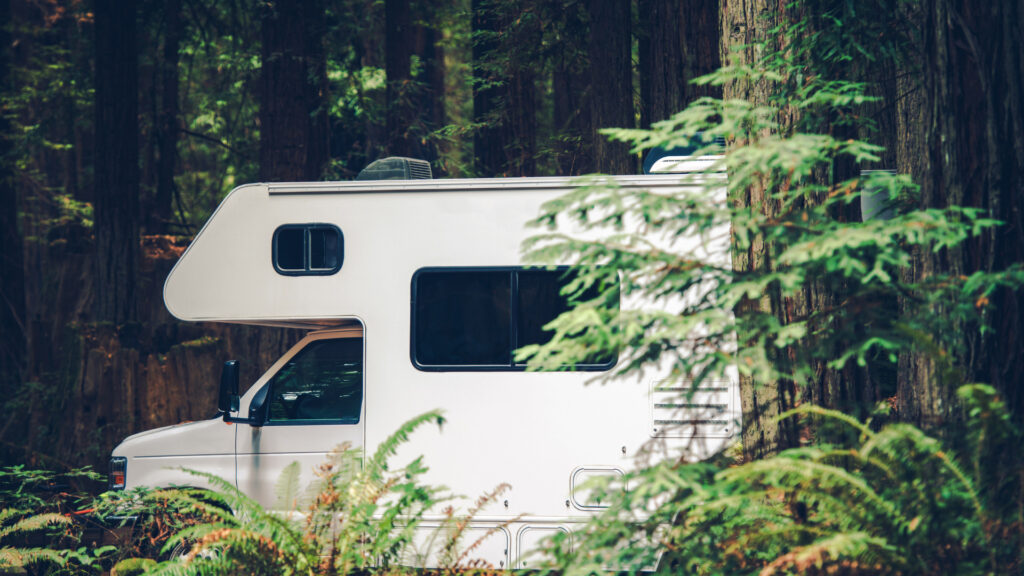
Make Some Epic Memories Boondocking and Dry Camping
We have made some incredible memories while boondocking and dry camping and think you can too. Don’t let the fear of the unknown prevent you from giving these camping styles a try.
It might surprise you how easy it can be to work your way into extended boondocking and dry camping trips. It can be scary and intimidating at first, but if you follow these boondocking and dry camping tips, you’ll be a pro before you know it!
What are some of your boondocking or dry camping tips?






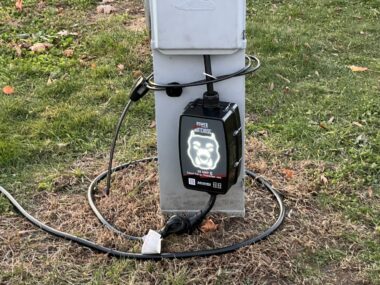
So Boondocking or Dry Camping.
So what do you call staying at a Cracker Barrel or a Lowe’s or a Casino ?
Need a clarification because we call this Boondocking.
Thanks. David.